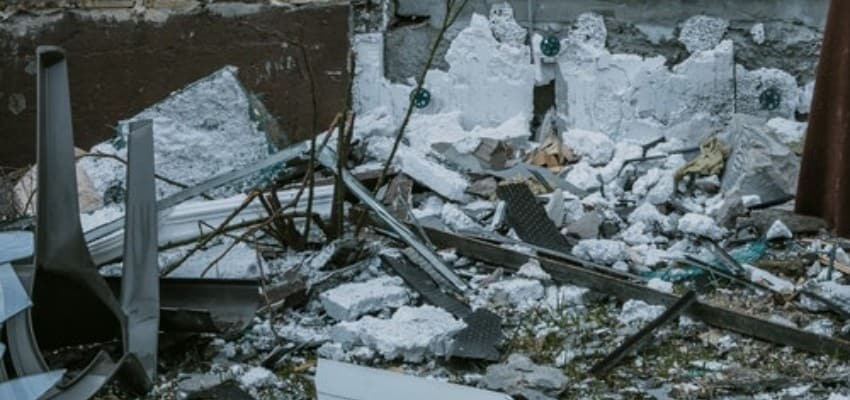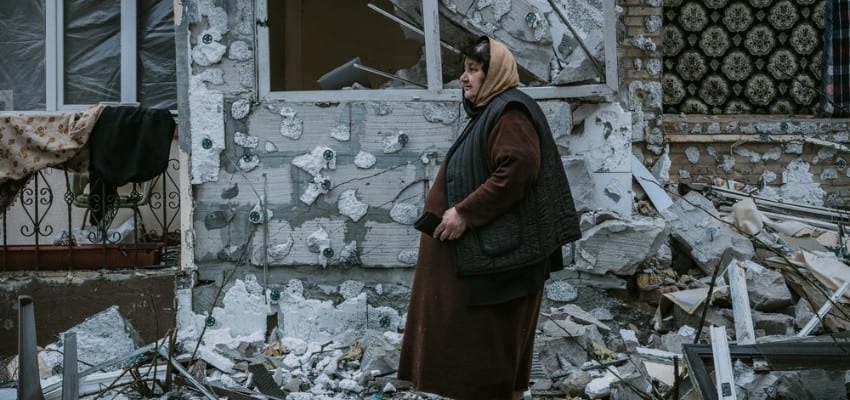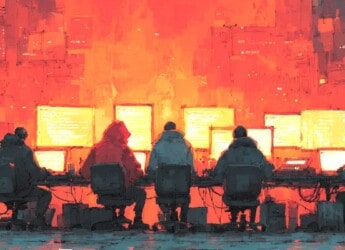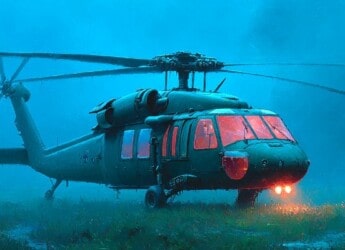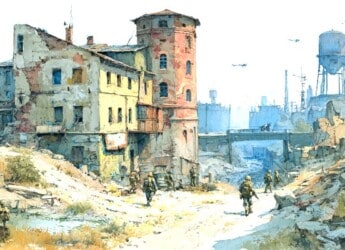|
|
Content Assessment: From Mass to Mass Destruction? Ukraine Conflict Assessments in Maps (April 22 – 24, 2022)
Information - 90%
Insight - 90%
Relevance - 88%
Objectivity - 91%
Authority - 92%
90%
Excellent
A short percentage-based assessment of the qualitative benefit of the post highlighting the recent Ukraine conflict assessments in maps from the Institute for the Study of War.
Editor’s Note: One of the most accurate and detailed sources for ongoing updates on the Ukraine crisis is the Ukraine Conflict Update from the Institute for the Study of War. The Institute for the Study of War (ISW) is a 501(c)(3) organization and produces strictly non-partisan, non-ideological, fact-based research. ISW seeks to promote an informed understanding of war and military affairs through comprehensive, independent, and accessible open-source research and analysis. ISW’s research is made available to the general public, military practitioners, policymakers, and media members. Providing a daily synthesis of key events related to the Russian aggression against Ukraine, ISW updates may benefit cybersecurity, information governance, and legal discovery professionals as they follow the business, information technology, and legal trends and trajectories impacted by and stemming from the current Ukraine conflict.
Assessment and Maps*
Ukraine Conflict Assessments – An Overview in Maps
- Institute for the Study of War (ISW), Russia Team
- Critical Threats Project (CTP), American Enterprise Institute
General Assessment Background Info
- ISW systematically publishes Russian campaign assessments that include maps highlighting the assessed control of terrain in Ukraine and main Russian maneuver axes.
- These maps augment daily synthetic products that cover key events related to renewed Russian aggression against Ukraine.
Russian Offensive Campaign Assessment on April 24, 2022
Extract (Mason Clark and Kateryna Stepanenko)
Russian offensive operations in eastern Ukraine made minor advances around Severodonetsk on April 24, seizing several small towns and establishing a pontoon bridge across the Krasna River west of Severodonetsk. Russia’s offensive in eastern Ukraine continues to follow the pattern of their operations throughout the war, using small units to conduct dispersed attacks along multiple axes rather than taking the pauses necessary to prepare for decisive operations. Russian forces continued to bombard the remaining Ukrainian defenders in Mariupol’s Azovstal Steel Plant and may be preparing for renewed assaults on the facility, which would likely lead to high Russian casualties. The military situation in southern Ukraine did not change in the last 24 hours.
Key Takeaways
- Russian forces continued to pressure Ukrainian defenders in the Azovstal facility in Mariupol.
- Ukrainian sources report that Russian troops are preparing to conduct renewed assaults on Azovstal that would likely prove costly—possibly to meet a Kremlin-imposed deadline to clear Mariupol—but ISW cannot independently confirm these reports.
- Russian forces secured limited gains northwest of Severodonetsk but remain unlikely to be able to launch massed offensive operations.
- Additional Russian forces are deploying to reinforce unsuccessful attacks on the Izyum front.
- Ukrainian civilians in occupied Kharkiv Oblast are reportedly organizing volunteer movements to resist Russian occupation measures, similar to previously documented actions in southern Ukraine.
We do not report in detail on Russian war crimes because those activities are well-covered in Western media and do not directly affect the military operations we are assessing and forecasting. We will continue to evaluate and report on the effects of these criminal activities on the Ukrainian military and population and specifically on combat in Ukrainian urban areas. We utterly condemn these Russian violations of the laws of armed conflict, Geneva Conventions, and humanity even though we do not describe them in these reports.
Ukraine Conflict Maps - 042222-042422
Read the latest Ukraine Conflict updates from the Institute for the Study of War
* Shared with direct express permission from the Institute for the Study of War (ISW).
About the Institute for the Study of War Research Methodology
ISW’s research methodology relies on both primary and secondary sources, enabling researchers to develop a comprehensive understanding of the situation on the ground. In order to analyze military and political developments in any given area, ISW’s research analysts must wholly understand the systems of enemy and friendly forces. They must also understand the population demographics, physical terrain, politics, and history of that area. This lays the analytical foundation for understanding the reasons for particular developments and fulfilling their assigned research objectives. ISW analysts also spend time in places like Iraq, Afghanistan, and elsewhere in order to gain a better understanding of the security and political situation and to evaluate the implementation of current strategies and policies. Our researchers compile data and analyze trends, producing a granular analysis of developments in areas of research, producing an accurate, high-resolution, timely, and thorough picture of the situation. ISW’s research methodology guarantees its success and commitment to improving the nation’s ability to execute military operations, achieve strategic objectives, and respond to emerging problems that may require the use of American military power.
About the Institute for the Study of War
The Institute for the Study of War advances an informed understanding of military affairs through reliable research, trusted analysis, and innovative education. We are committed to improving the nation’s ability to execute military operations and respond to emerging threats in order to achieve U.S. strategic objectives. ISW is a non-partisan, non-profit, public policy research organization. Learn more, get involved, and contribute today.
Additional Reading
- [Annual Update] International Cyber Law in Practice: Interactive Toolkit
- Data Embassies: Sovereignty, Security, and Continuity for Nation-States
Source: ComplexDiscovery
